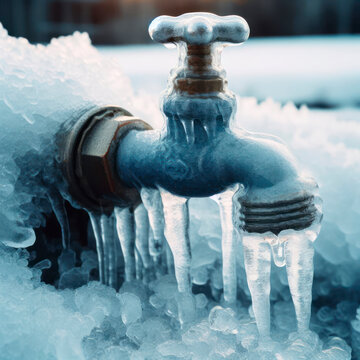Preventing Frozen Plumbing in Cold Weather: Key Tips
Preventing Frozen Plumbing in Cold Weather: Key Tips
Blog Article
Just how do you feel about How to Prevent Your Pipes From Freezing?

Cold weather can ruin your plumbing, particularly by freezing pipes. Right here's how to avoid it from taking place and what to do if it does.
Intro
As temperatures decrease, the threat of frozen pipes boosts, possibly resulting in costly repair services and water damage. Recognizing exactly how to avoid icy pipes is critical for property owners in cool climates.
Understanding Icy Pipelines
What triggers pipes to ice up?
Pipes freeze when subjected to temperature levels listed below 32 ° F (0 ° C) for expanded durations. As water inside the pipelines ices up, it increases, taxing the pipeline walls and potentially creating them to break.
Threats and problems
Frozen pipelines can lead to supply of water disturbances, building damage, and pricey repair work. Ruptured pipes can flooding homes and create substantial architectural damage.
Indicators of Frozen Pipes
Identifying frozen pipelines early can avoid them from bursting.
Exactly how to identify icy pipes
Look for reduced water flow from taps, uncommon odors or sounds from pipelines, and noticeable frost on revealed pipelines.
Prevention Tips
Shielding prone pipelines
Wrap pipes in insulation sleeves or utilize warm tape to safeguard them from freezing temperatures. Focus on pipelines in unheated or exterior locations of the home.
Home heating techniques
Maintain interior areas sufficiently warmed, particularly locations with plumbing. Open closet doors to allow cozy air to flow around pipelines under sinks.
Shielding Outside Plumbing
Garden pipes and exterior taps
Detach and drain pipes garden pipes before winter months. Set up frost-proof faucets or cover exterior taps with protected caps.
What to Do If Your Pipelines Freeze
Immediate actions to take
If you suspect frozen pipelines, maintain faucets available to ease pressure as the ice melts. Utilize a hairdryer or towels soaked in warm water to thaw pipes slowly.
Long-Term Solutions
Structural changes
Consider rerouting pipes far from outside wall surfaces or unheated locations. Include additional insulation to attics, basements, and crawl spaces.
Upgrading insulation
Invest in high-quality insulation for pipes, attics, and wall surfaces. Appropriate insulation helps keep consistent temperature levels and lowers the threat of frozen pipelines.
Conclusion
Stopping icy pipes needs aggressive steps and fast actions. By comprehending the reasons, indications, and preventive measures, home owners can safeguard their pipes during winter.
Helpful Tips to Prevent Frozen Pipes this Winter
UNDERSTANDING THE BASICS: WHY PIPES FREEZE AND WHY IT’S A PROBLEM
Water freezing inside pipes is common during the winter months, but understanding why pipes freeze, and the potential problems it can cause is crucial in preventing such incidents. This section will delve into the basics of why pipes freeze and the associated problems that may arise.
THE SCIENCE BEHIND FROZEN PIPES
When water reaches freezing temperatures, it undergoes a physical transformation and solidifies into ice. This expansion of water as it freezes is the primary reason pipes can burst. As the water inside the pipe freezes, it expands, creating immense pressure on the walls. If the pressure becomes too great, the pipe can crack or rupture, leading to leaks and water damage.
FACTORS THAT CONTRIBUTE TO PIPE FREEZING
Low Temperatures: Extremely cold weather, especially below freezing, increases the risk of pipes freezing. Uninsulated or Poorly Insulated Pipes: Pipes located in unheated areas, such as basements, crawl spaces, or attics, are more prone to freezing. Insufficient insulation or lack of insulation altogether exacerbates the problem. Exterior Wall Exposure: Pipes running along exterior walls are susceptible to freezing as they encounter colder temperatures outside. Lack of Heating or Temperature Regulation: Inadequate heating or inconsistent temperature control in your home can contribute to frozen pipes. PROBLEMS CAUSED BY FROZEN PIPES
- Pipe Bursting: As mentioned earlier, the expansion of water as it freezes can cause pipes to burst, resulting in significant water damage.
- Water Damage: When pipes burst, it can lead to flooding and water damage to your property, including walls, ceilings, flooring, and personal belongings.
- Structural Damage: Prolonged exposure to water from burst pipes can compromise the structural integrity of your home, leading to costly repairs.
- Mold and Mildew Growth: Excess moisture from water damage can create a favorable environment for mold and mildew growth, posing health risks to occupants.
- Disrupted Water Supply: Frozen pipes can also result in a complete or partial loss of water supply until the issue is resolved.
WHY CERTAIN PIPES ARE MORE PRONE TO FREEZING
- Location: Pipes located in unheated or poorly insulated areas, such as basements, crawl spaces, attics, or exterior walls, are at higher risk of freezing.
- Exterior Pipes: Outdoor pipes, such as those used for irrigation or exposed plumbing, are particularly vulnerable to freezing as they are directly exposed to the elements.
- Supply Lines: Pipes that carry water from the main water supply into your home, including the main water line, are critical to protect as freezing in these lines can affect your entire plumbing system.
- Underground Pipes: Pipes buried underground, such as those connected to sprinkler systems or outdoor faucets, can be susceptible to freezing if not properly insulated.
https://busybusy.com/blog/helpful-tips-to-prevent-frozen-pipes-this-winter/

Hopefully you enjoyed reading our article on How to Prevent Your Pipes From Freezing. Thanks for taking time to read our short article. Sharing is caring. Helping others is fun. Thank you for your time. Please come visit our blog back soon.
Source Report this page